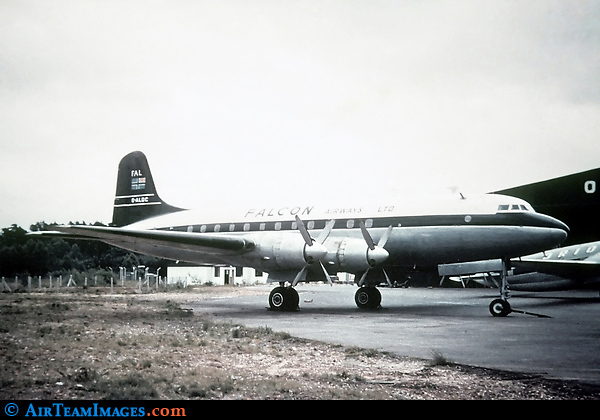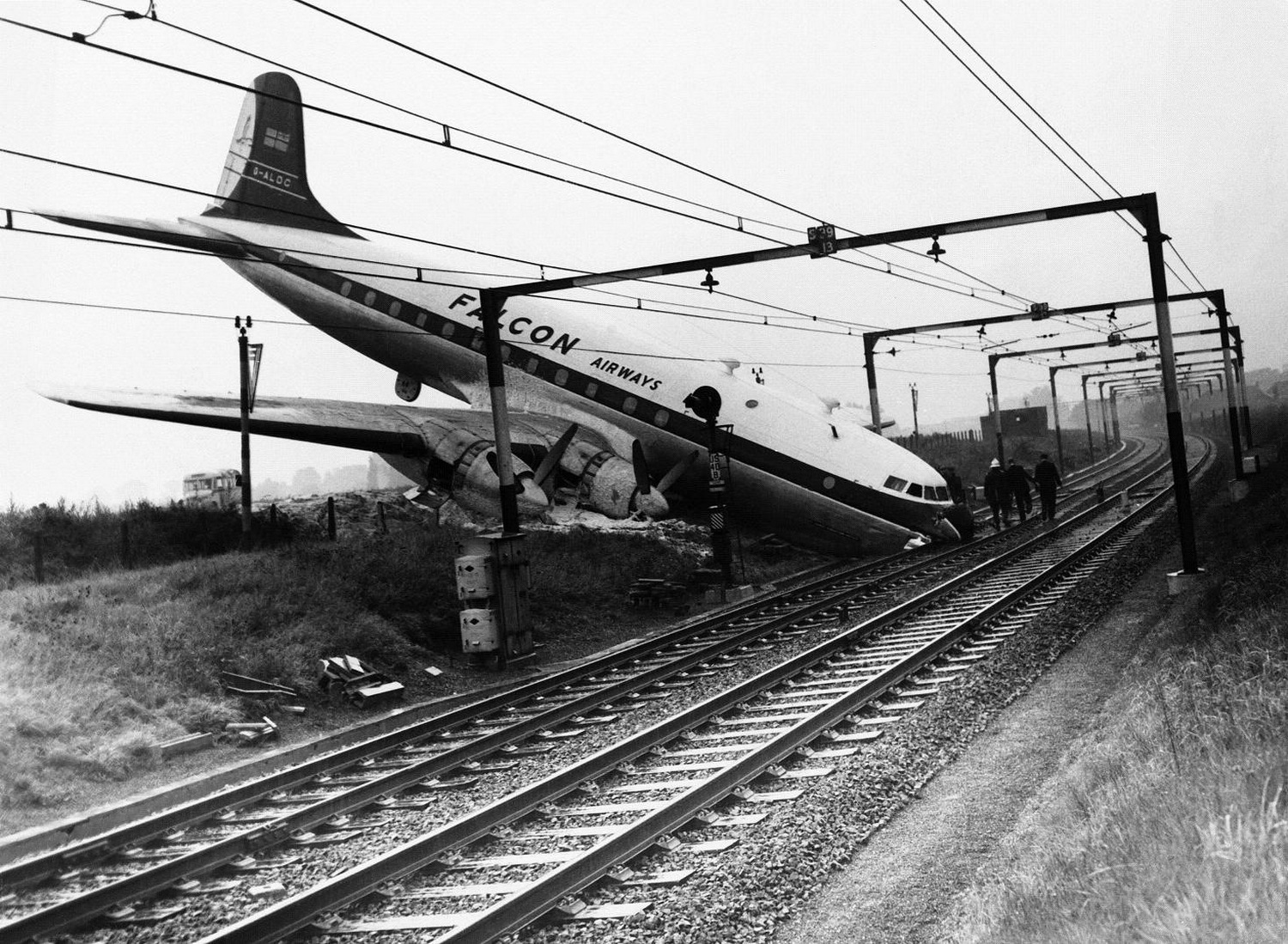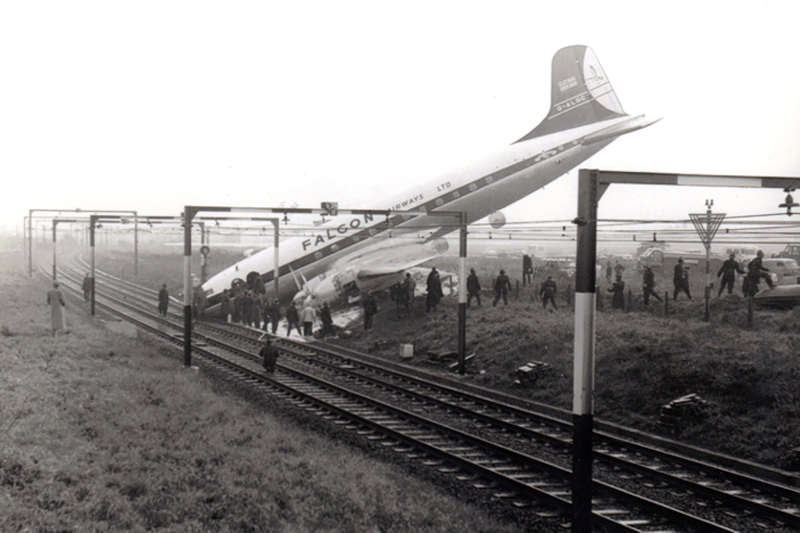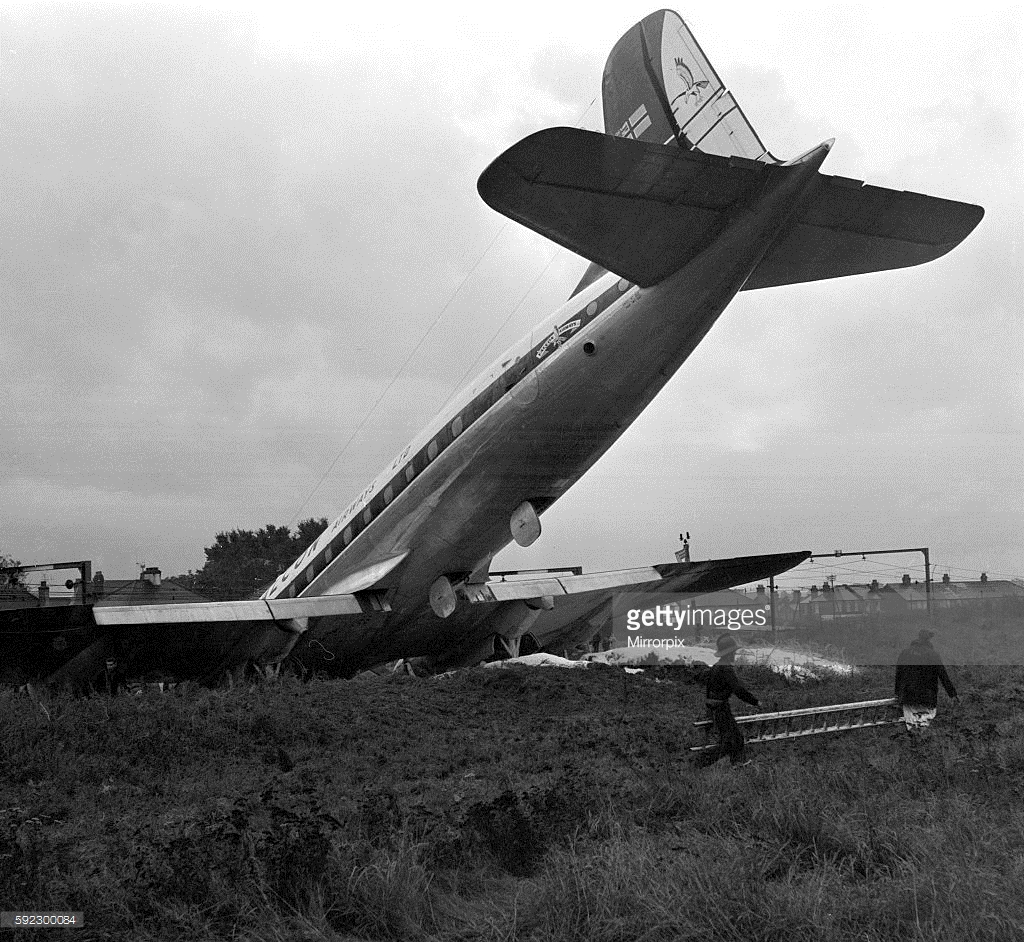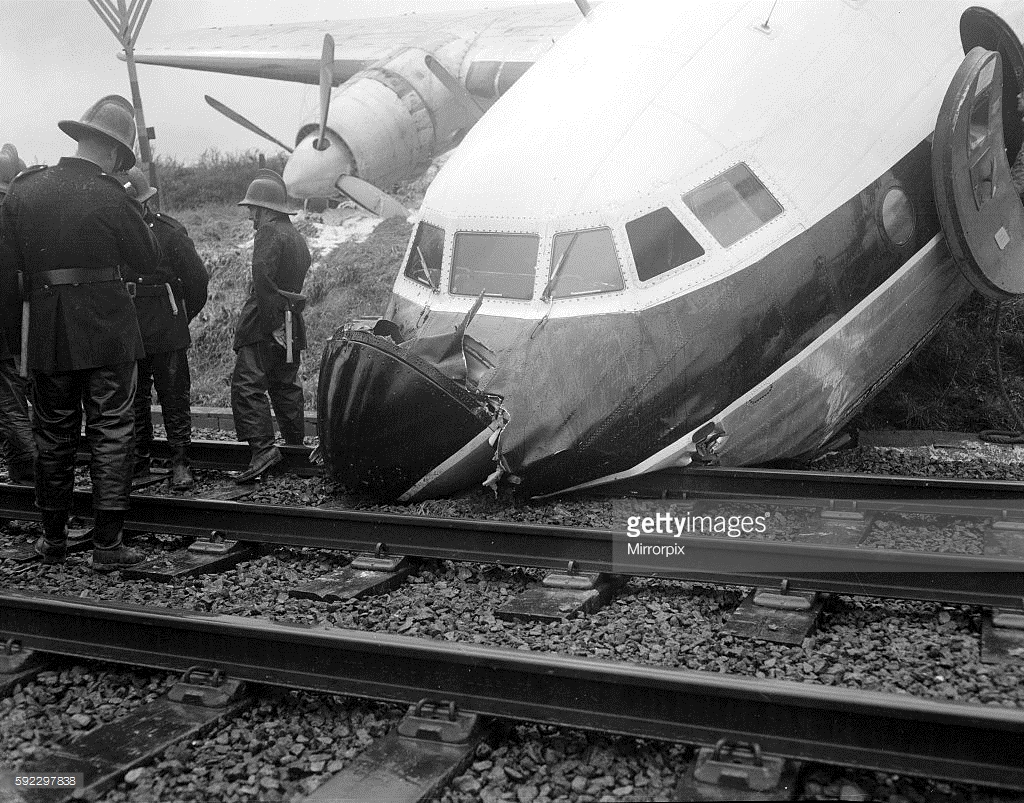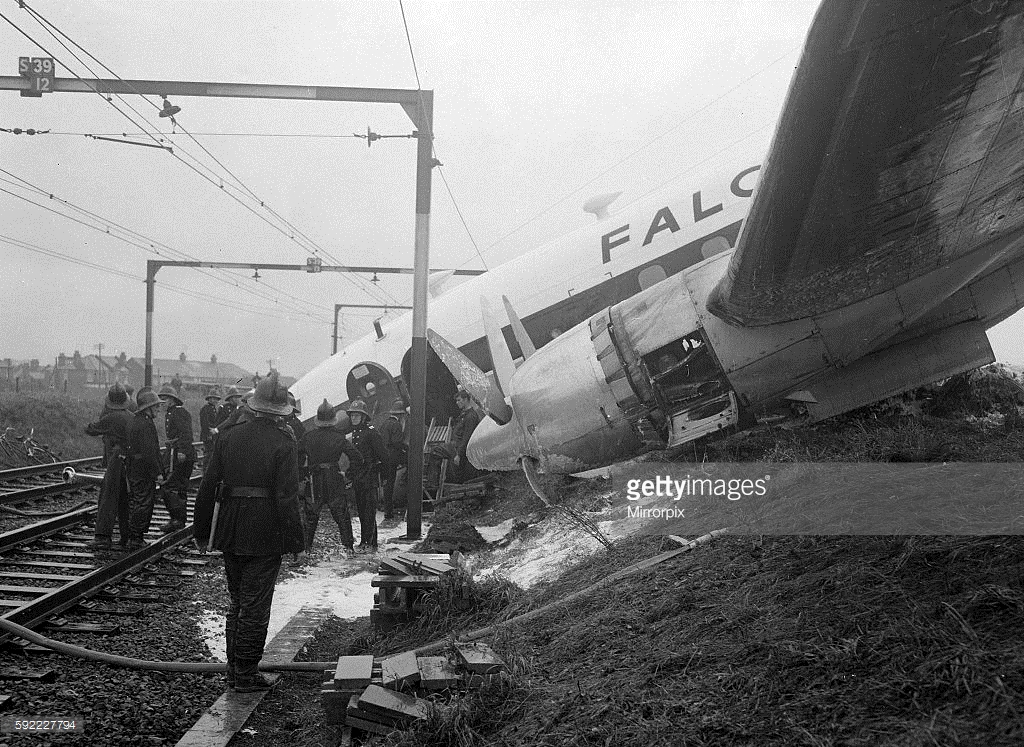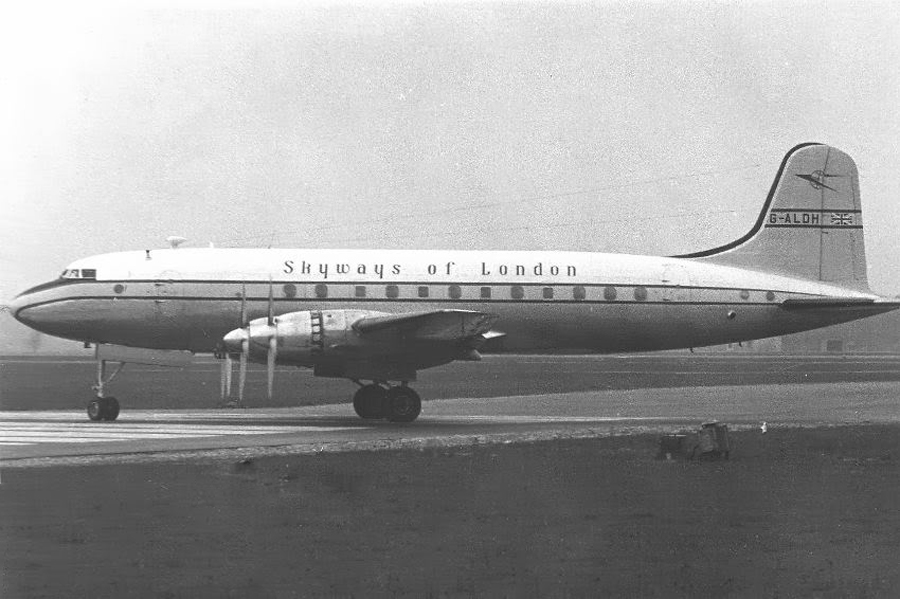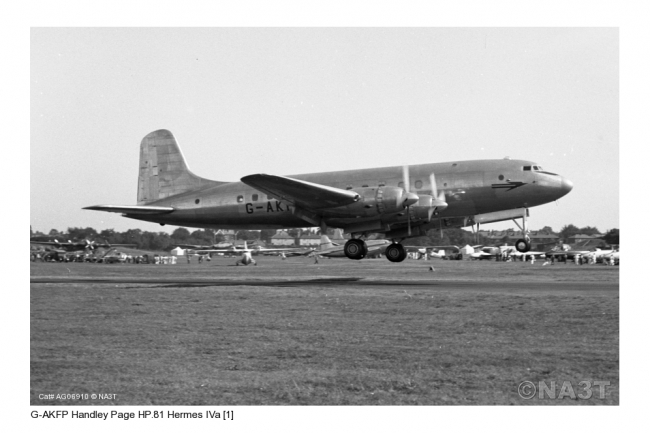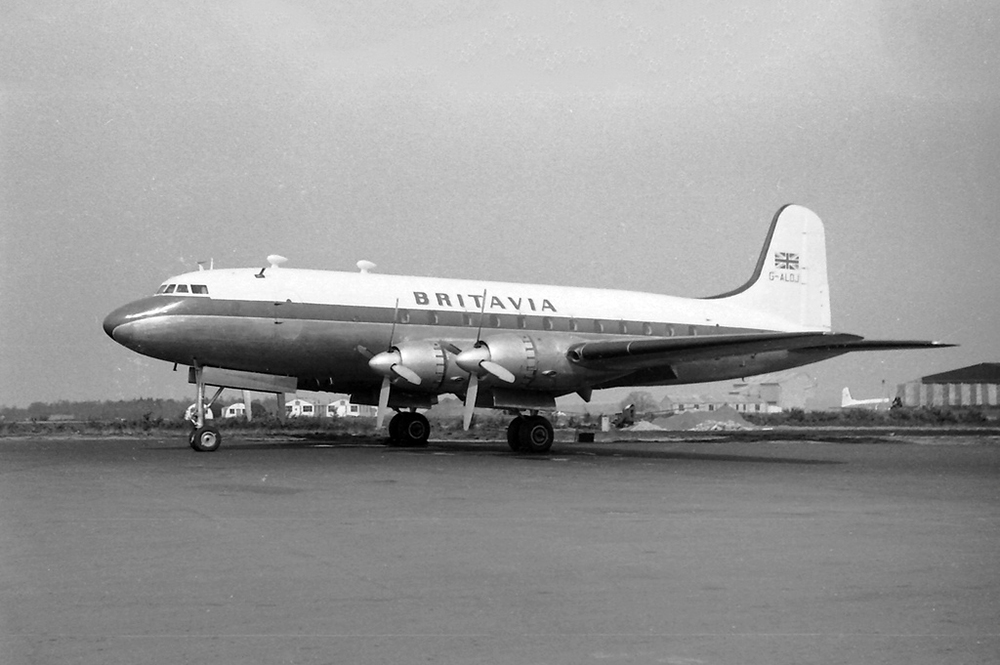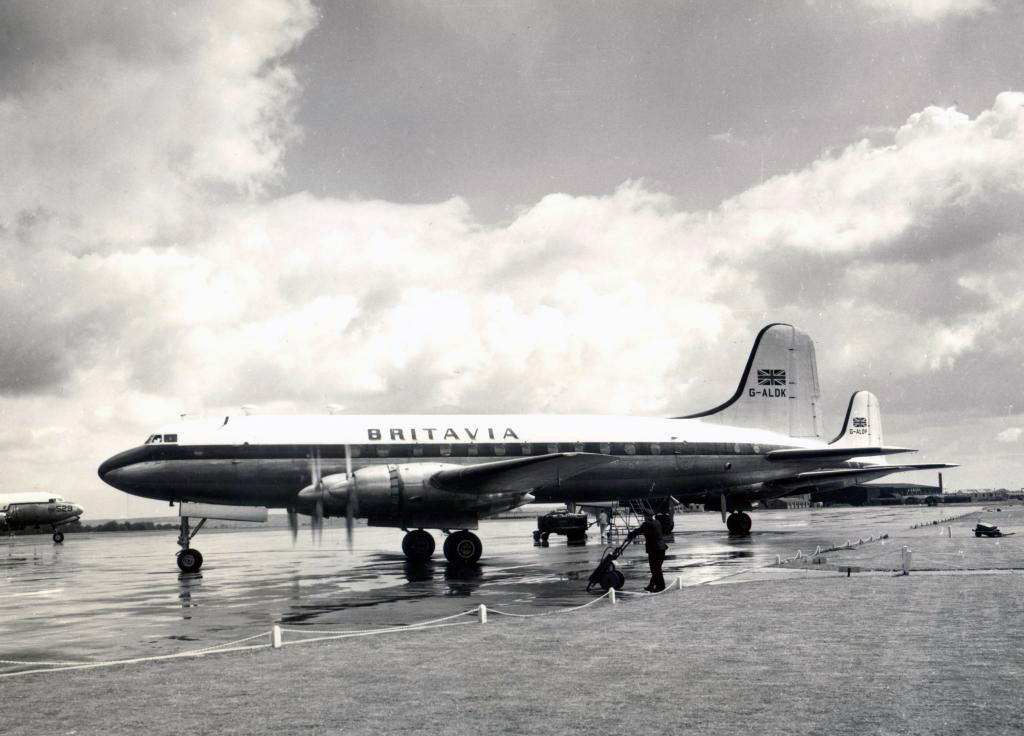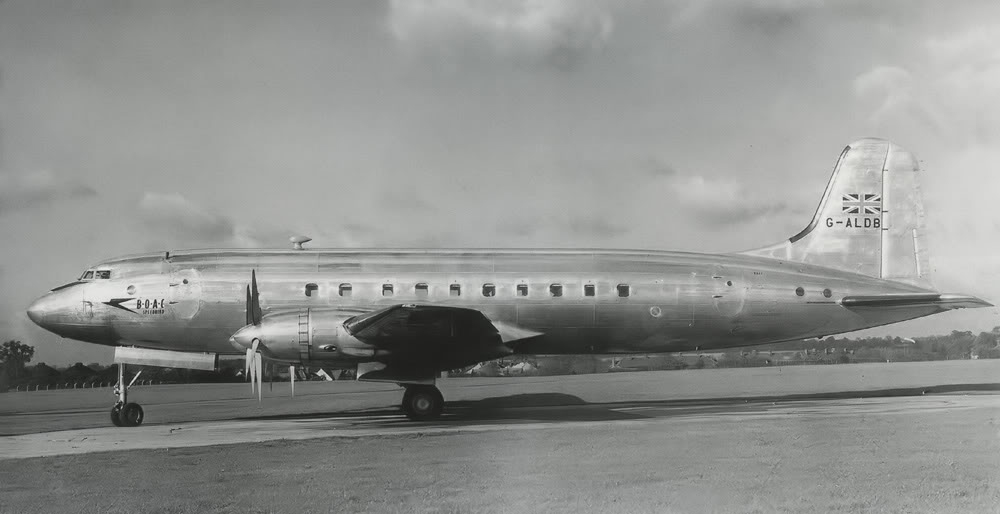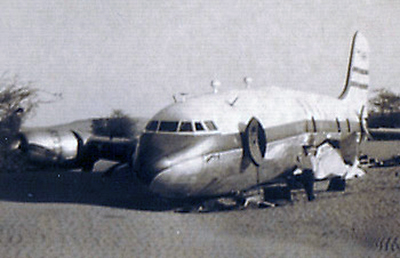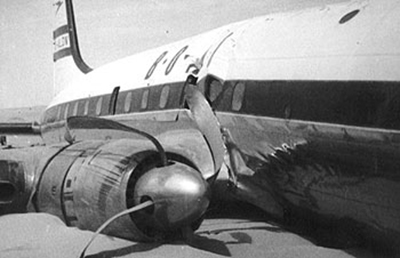Crash of a Handley Page H.P.81 Hermes IV in Southend
Date & Time:
Oct 9, 1960 at 1247 LT
Registration:
G-ALDC
Survivors:
Yes
Schedule:
Barcelona – Southend
MSN:
81/4
YOM:
1949
Crew on board:
5
Crew fatalities:
Pax on board:
71
Pax fatalities:
Other fatalities:
Total fatalities:
0
Aircraft flight hours:
17183
Circumstances:
Following an uneventful flight from Barcelona, the crew completed the approach and the landing on a wet runway. After touchdown, the pilot applied brakes according to the procedures but the aircraft was unable to stop within the remaining distance, overran, struck an embankment and came to rest with its nose on a railway track. All 76 occupants were evacuated safely while the aircraft was considered as damaged beyond repair.
Probable cause:
The accident was due to the aircraft aquaplaning during part of the landing run. The low frictional values during this condition prevented the captain from obtaining effective braking.
